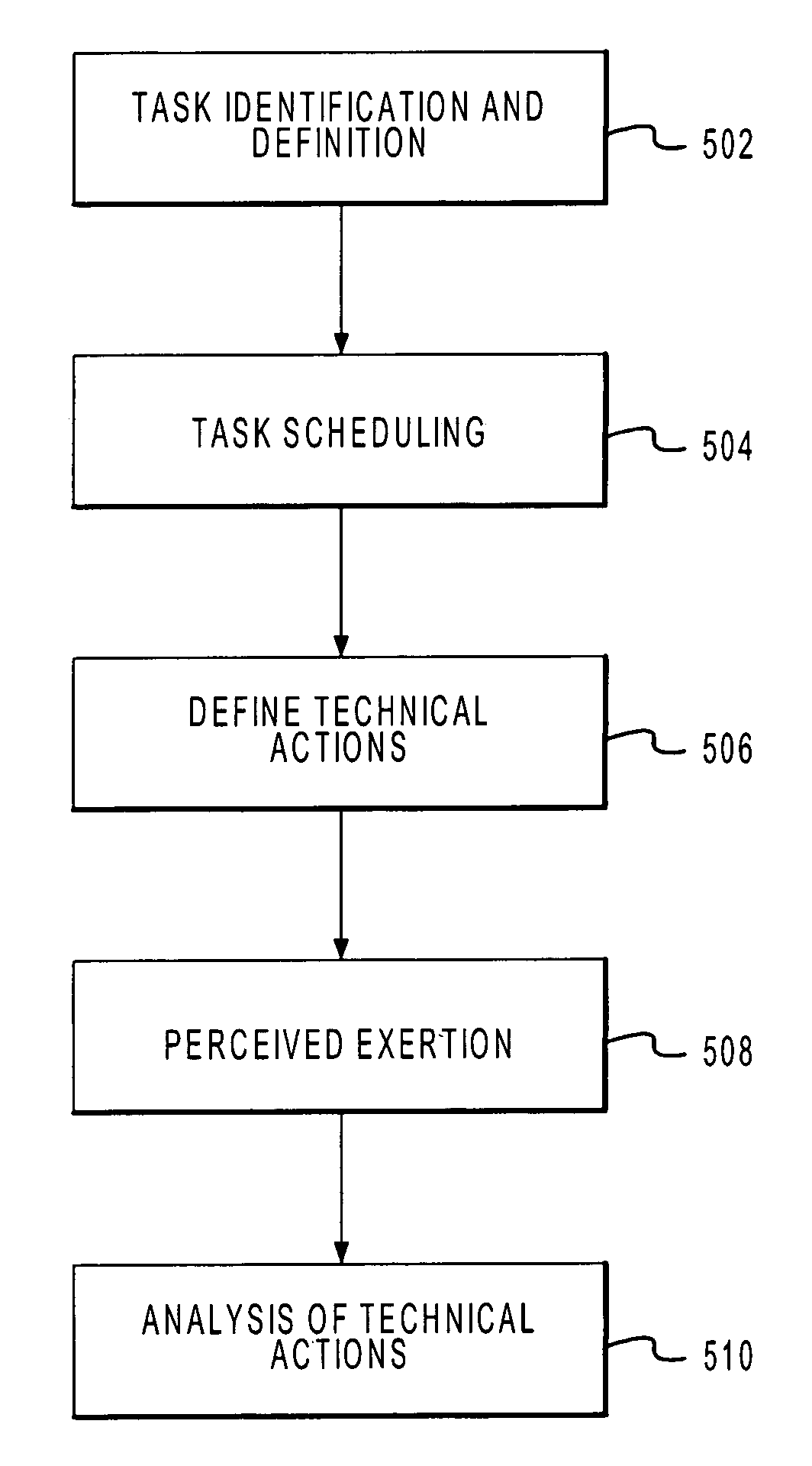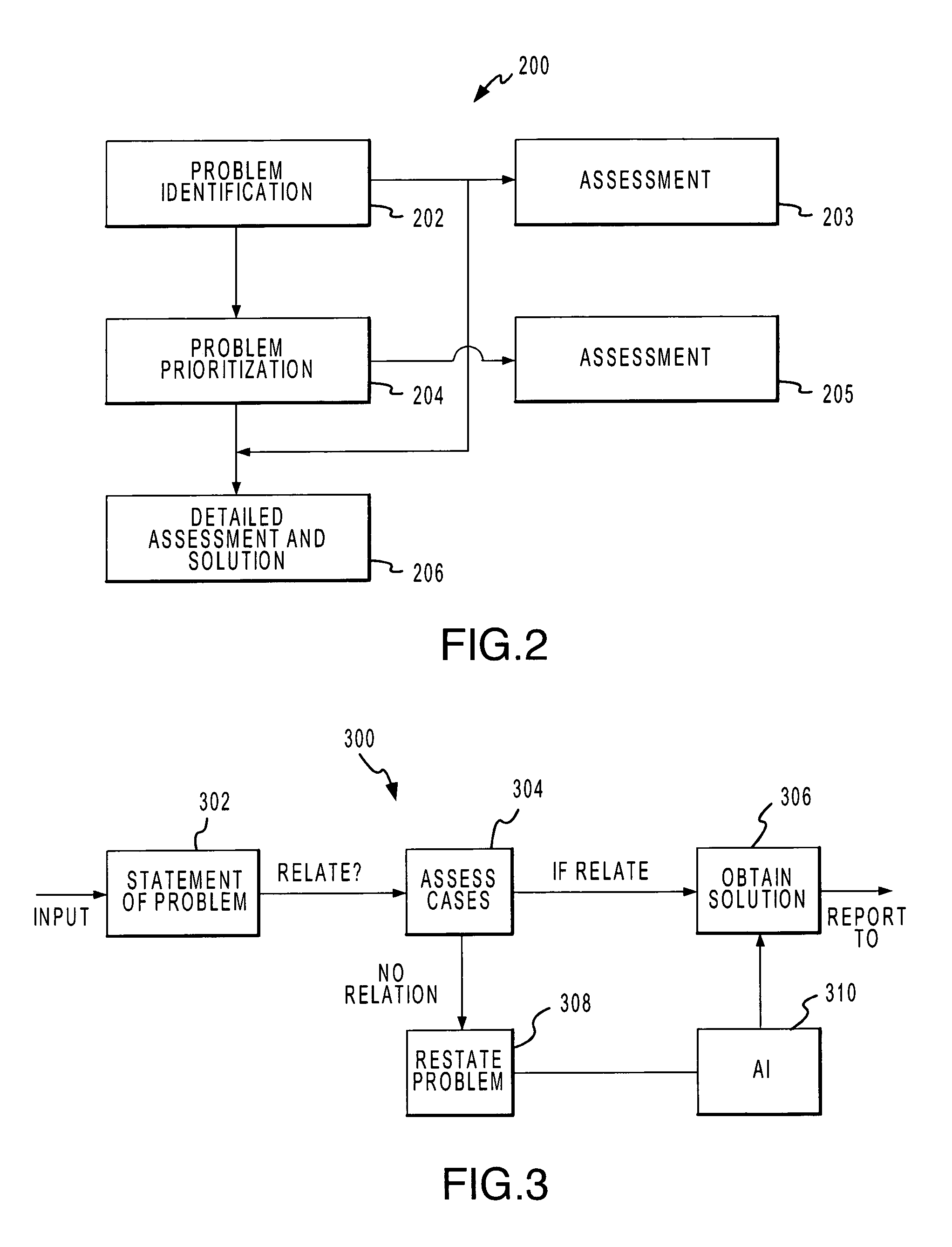Method and system for ergonomic assessment and reduction of workplace injuries
a technology for applied in the field of ergonomic assessment and workplace injuries reduction, can solve the problems of limited access to knowledge, limited problem solving functions, and limited resources for solving various industrial, manufacturing, engineering or business problems, and achieve the effects of reducing ergonomic injuries, facilitating the definition of issue components, and facilitating the assessment of client information
- Summary
- Abstract
- Description
- Claims
- Application Information
AI Technical Summary
Benefits of technology
Problems solved by technology
Method used
Image
Examples
Embodiment Construction
[0027]The present invention may be described herein in terms of various software modules and processing steps. It should be appreciated that such modules and steps may be realized by any number of hardware components configured to perform the specified functions. For example, the present invention may employ various input / output devices, data storage and memory devices, buffers, terminals, and the like, which may carry out a variety of functions under the control of one or more microprocessors or other control devices. In addition, those skilled in the art will appreciate that the present invention may be practiced in any number of engineering and business contexts and that the exemplary embodiment relating to ergonomics in the workplace as described herein is merely one exemplary application for the invention. For example, the principles, features and methods discussed may be applied to any general health and safety application within a workplace. Further, various aspects of the pr...
PUM
 Login to View More
Login to View More Abstract
Description
Claims
Application Information
 Login to View More
Login to View More - R&D
- Intellectual Property
- Life Sciences
- Materials
- Tech Scout
- Unparalleled Data Quality
- Higher Quality Content
- 60% Fewer Hallucinations
Browse by: Latest US Patents, China's latest patents, Technical Efficacy Thesaurus, Application Domain, Technology Topic, Popular Technical Reports.
© 2025 PatSnap. All rights reserved.Legal|Privacy policy|Modern Slavery Act Transparency Statement|Sitemap|About US| Contact US: help@patsnap.com



